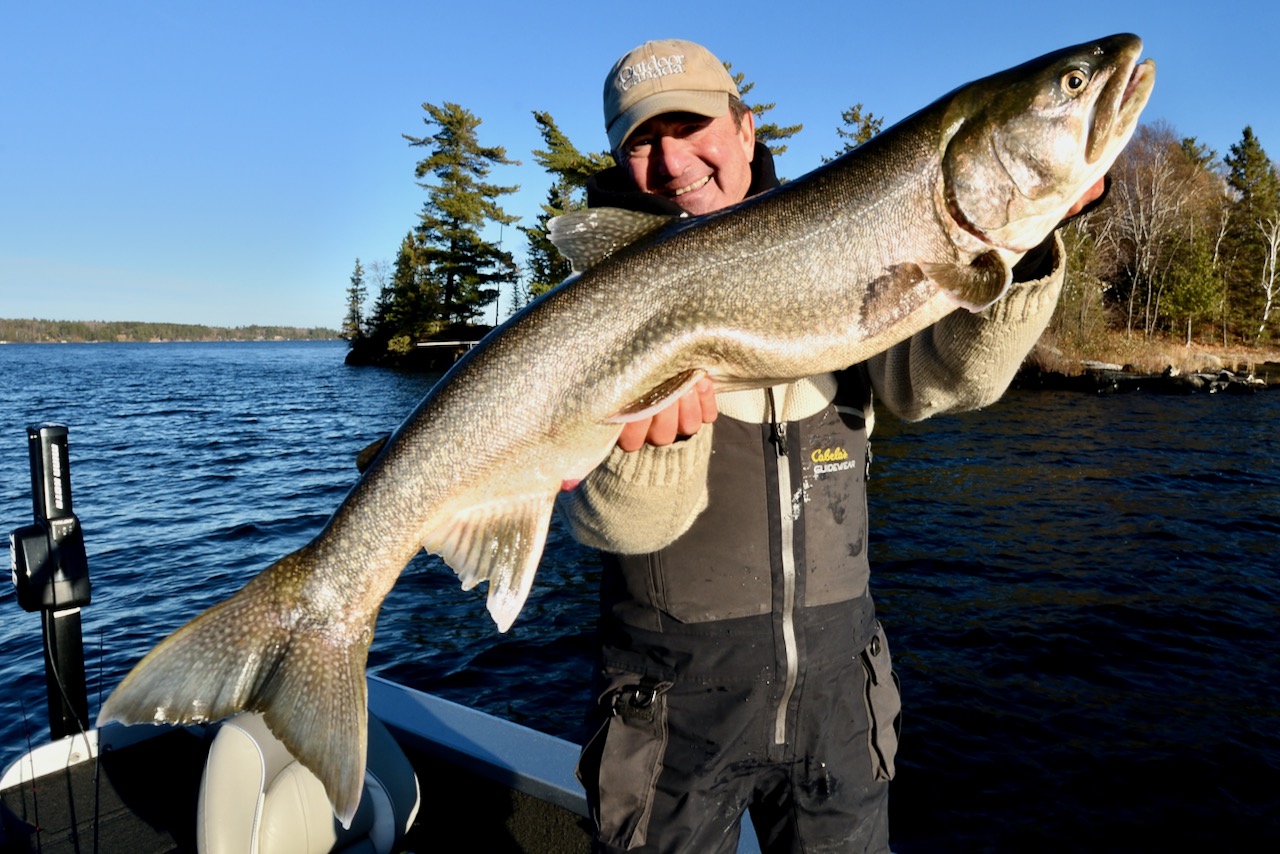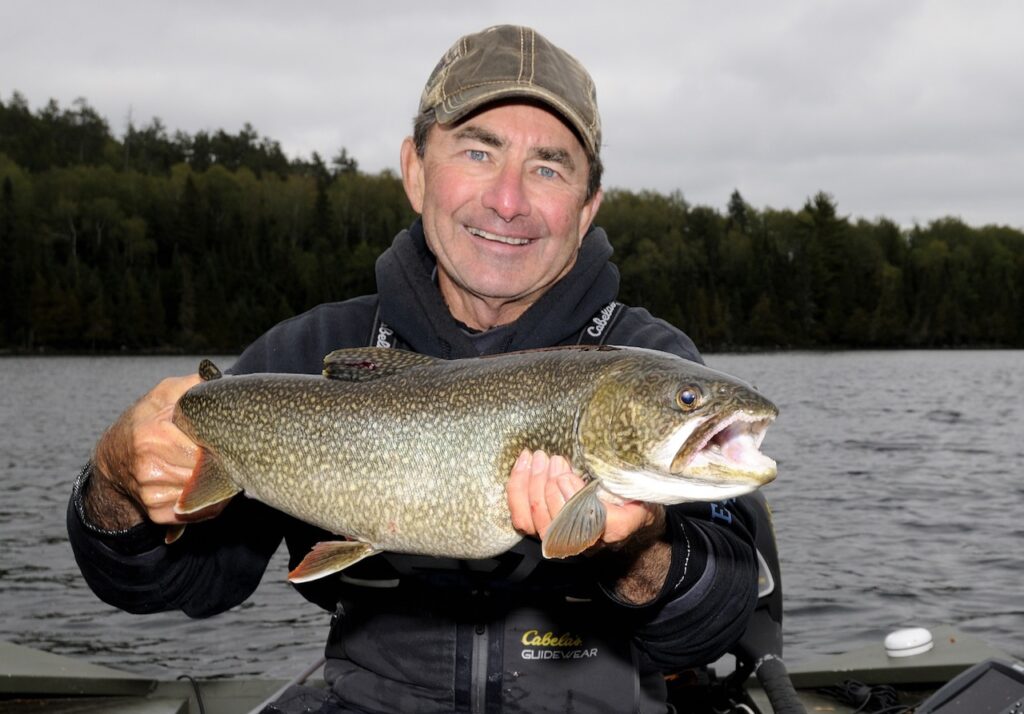EASY-DOES-IT LAKERS
Simple tackle and tactic tips for springtime trout action
Advertisement
#3 DOUBLE-SHOT TROUT
After the water warms, and the insect hatches begin, it can look like raindrops are falling on the water’s surface, even though there’s not a cloud in the sky. These dimples are caused by small four- to eight-inch-long pelagic forage fish, typically ciscoes, shiners and smelt. Whitefish will also often suck emerging mayflies and midges off the surface. You’ll see literally thousands of small fish gleefully scooting everywhere, feasting on the delectable bugs rising up from the bottom. There will also be dozens of husky lake trout devouring the exuberant baitfish. If you watch carefully, you’ll sometimes see a simple dimple suddenly become an explosion. Hello and goodbye, cisco!
Advertisement
Typically, this raindrop phenomenon happens in the evening on calm, protected bay-like sections of the lake that have been warmed all day by sun. As a bonus, you can return to the same spot the following morning and find the trout and baitfish down deeper using your sonar.
TACKLE
To catch these deep trout during the morning, use your favourite medium to medium-heavy action spinning rod, and a reel spooled with 10- to 14-pound gel-spun line. Tie on a four- to six-foot-long leader of eight- to 10-pound-test mono or fluoro, add a small snap to the end, and attach a thin metal blade bait, such as the Freedom Blade or Heddon Sonar.
Advertisement

At sunset, when those counterfeit raindrops start dimpling the surface again, and the trout go berserk slashing the baitfish, it’s time to change up. Now you can use your favourite jerkbait rod and reel to hook feisty lakers that will hit so hard you’ll need to keep a firm grip on your set-up. Your favourite jerkbaits will work fine, but I always use a lure with a feathered rear hook, such as a Rapala X-Rap, to add to the ruse. This spring, I plan to experiment with the new VMC Bladed Hybrid Treble Hooks.
Advertisement
TECHNIQUE
In the morning, cast your blade out as far as you can and let it plummet to the bottom. Once the line goes slack, engage the bail and simply start reeling the lure back to the boat. You’ll feel the blade vibrating until suddenly—whack!—you’ll feel a lake trout pummel what it thought was a mayfly-chasing cisco.
At dusk, there are two details that will increase your success immeasurably. First, stay well away from the roiling baitfish activity. I like to shut down the big motor and work my way slowly towards the buffet table using my electric trolling motor. I then make as long a cast as possible so I don’t alert the fish about my presence. Do this right, and you’ll often see the trout swirling, slashing and eating the baitfish in the clear water right beside the boat, totally oblivious to your presence.
The second essential detail is to include as many prolonged pauses as possible in your retrieve. Cast your lure and begin a rip-and-pause presentation, stopping the bait after every three or four rips for as long as you can stand it. Many days, the trout will slash your bait as it’s hanging perfectly still in the middle of the water column, or as soon as you begin to move it. It’s really is just that simple.


